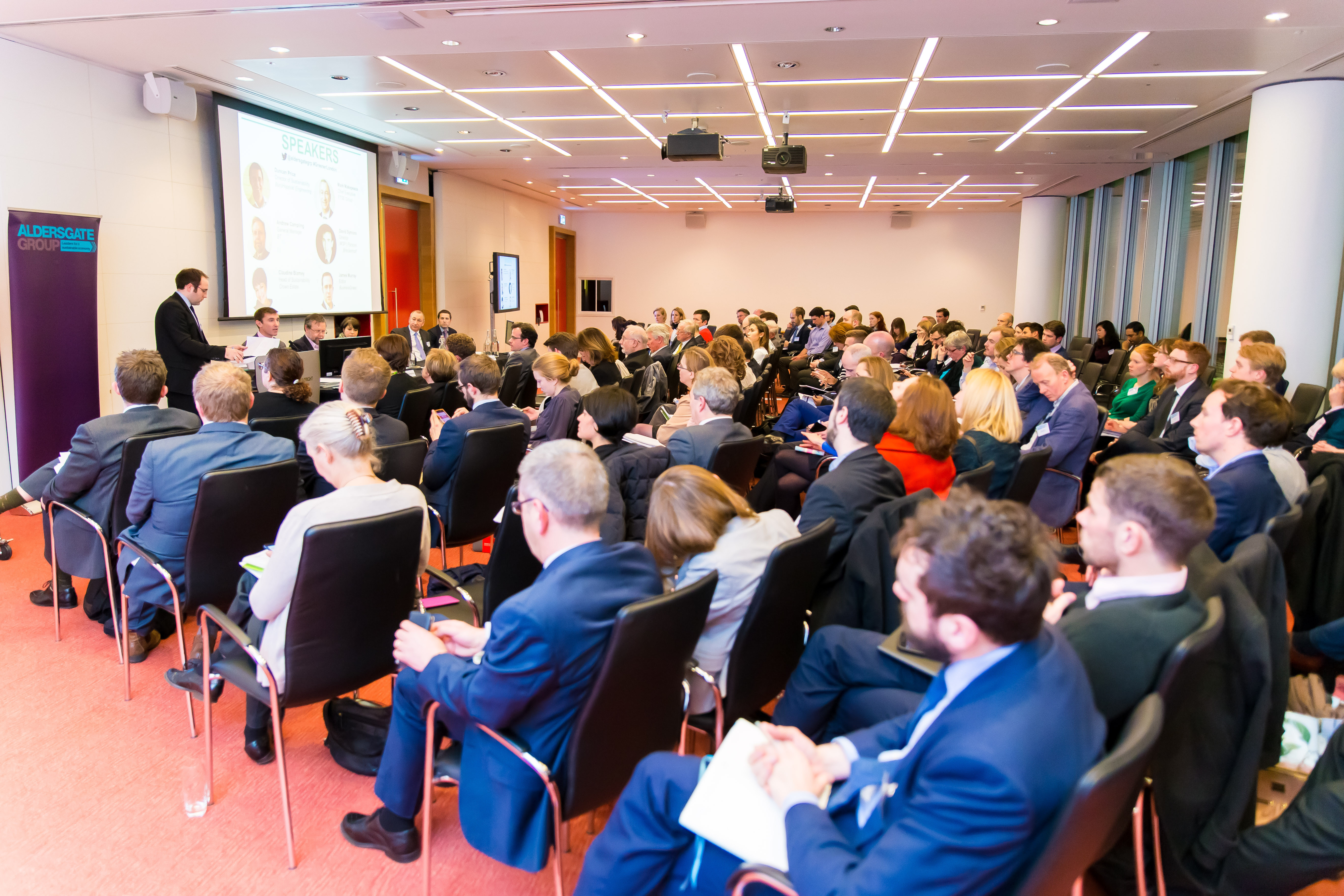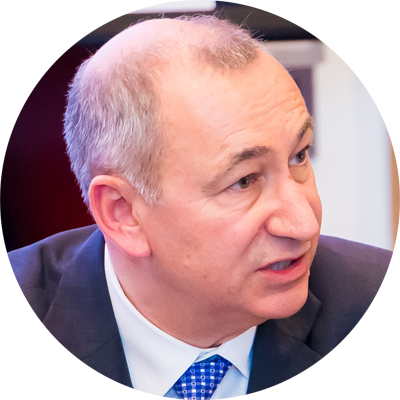March 2016: The Aldersgate Group held an event on 3 March entitled ‘The Mayoral Election: London, The Environment and the Low Carbon Economy‘. A summary of the evening’s discussions are not posted on their website – however – they been emailed around. I’ve reproduced the content of that email below.
| In the run up to the London mayoral election in May, the Aldersgate Group hosted a debate to explore what measures businesses think are needed to ensure London plays an increasingly important role in the growing international low carbon economy.
The event featured a keynote speech by Lord Barker, Chair of the London Sustainable Development Commission as well as a business panel of experts from BT, BuroHappold Engineering, Crown Estate, FTSE Group, and WSP | Parsons Brinckerhoff.
Read on for highlights from this event.

|
|
 |
Opening the event, Caroline May, Head of Environment, Health and Safety at Norton Rose Fulbright, stressed that “London has a thriving business community but stands on the brink of transition” with the forthcoming mayoral election, the recent COP 21 climate change summit and the UK’s EU referendum.
Ms May added that the coming months “will determine the challenges to be faced in meeting the climate change targets as set in Paris as well as define the way of living and trading more sustainably, minimising our environmental impact, maximising our natural capital and rewarding investment in those areas”. |
|
|
| Joan Walley, Chair of the Aldersgate Group, emphasised that the next Mayor must “create solutions that would ensure that London plays an increasingly integral role in the growing international low carbon economy”.
Building sustainable and resilient cities is a constant theme across all the key areas of work for the Aldersgate Group. The key questions for this debate are what should be the sustainability priorities for the next Mayor of London and what are the mechanisms by which these priorities will be achieved. |
 |
|
|
 |
Delivering the keynote speech, Lord Barker, Chair of the London Sustainable Development Commission (LSDC), noted that London’s “disproportionate influence on its neighbours and the wider world” creates a major opportunity to set a standard globally and highlighted the LSDC’s three key areas of priority for the next Mayor.
Firstly, circular economy and the shift to a more sustainable path of consumption will be “absolutely vital”. Lord Barker emphasised that this agenda is much more than just waste, recycling and reuse but also “thinking about the way that we work with services, use consumer goods, design products and re-engineer the way we live”.
Secondly, the next Mayor should prioritise distributed energy and energy efficiency. There are already several projects that have made good progress and prove that “it is increasingly economically and commercially feasible to deploy renewables and sustainable energy within a large metropolis in a way that is scalable and makes sense for consumers”. Lord Barker urged that the new Mayor liaise with DECC early and “insist that the new regime that replaces ECO takes into account the special conditions that we need for London” such as the higher costs for energy efficiency initiatives.
Thirdly, Lord Barker put the spotlight on the LSDC’s vision for a clean tech cluster in West London that would be the “greatest concentration of green innovation anywhere outside the west coast of America”. He noted that the regeneration site at Old Oak Common presented a real opportunity, due to its future link to HS2 and proximity to a new campus for Imperial College, to foster “an extraordinary dynamic that brings together entrepreneurs, investors and manufacturers”. |
|
|
| Duncan Price, Director for Sustainability at BuroHappold Engineering, highlighted that, in order to tackle London’s systemic issues, the next Mayor’s plan must have a strong vision, be viable, drive innovation and spur action.
Mr Price recognised that London is already leading on several areas but more can be done to drive the real time management of energy in buildings. He referenced the “well-known performance gap between the design and reality of buildings…and [how] performing in practice is the real challenge to bring energy use down in existing buildings”.
Addressing concerns on the costs for green buildings in a city where property prices are high, Mr Price stressed “that if you can’t get the economics to work in London where there is desirability to live here then it’s not being valued correctly”. He added that this should therefore encourage investment in the latest technology. |
 |
|
|
 |
Mark Makepeace, Chief Executive Officer of FTSE Group, suggested that the next Mayor should encourage more disclosure and corporate environmental reporting to ensure that investors get the sustainability data they require.
The FTSE4Good Index Series was launched 15 years ago and initially received criticism from the CBI and the press. The index measures the performance of companies demonstrating strong environmental, social and governance practices, though very few companies then had met the relatively “watered-down criteria”. Mr Makepeace recognised that the market has transformed since the index was first launched and noted the next Mayor “must recognise that we are undergoing an industrial transition which has huge investment implications”.
He added that London has become an important centre for green bonds, which the next Mayor should promote further. In 2014, green bonds raised $36bn of finance which is triple what was raised in 2013. In 2015, the value was over $40bn and, this year, it is expected to top $60bn. |
|
| Claudine Blamey, Head of Sustainability at the Crown Estate, stressed the important role of green infrastructure in meeting the needs of future generations in London.
The Crown Estate and other London property owners have joined forces for the Wild West End ecology initiative. This will include the Crown Estate’s work to create more than a hectare of green space across Regent Street and St James’s Street, which is “equivalent to one and a third times the size of a football pitch at Wembley”. She noted that efforts in Chicago to create green roofs on 10% of the city’s buildings have “removed 17,400mg of nitrogen oxide each year and is part of a range of additional benefits from green spaces that includes enhanced ecological biodiversity and better quality of life”.
Ms Blamey noted that the project is expected to have a very positive impact on air quality, the benefits of which will have a knock-on effect on health spending. The investment in green roofs in Chicago is expected to help save $65m on public health spending. |
 |
|
|
 |
Andrew Campling, BT’s General Manager for London, emphasised that the technology and creativity industry in London has huge potential to reduce carbon emissions in the UK.
Mr Campling stressed that ICT could help the UK meet its carbon budgets. “If ICT were used to its fullest extent by 2030, as shown in BT’s recently commissioned report, the sector could deliver a 24% reduction in UK carbon emissions by 2030, some 12 times the carbon footprint of the ICT sector itself. This is the equivalent of taking 26 million passenger cars off the road”.
He added that the design of products and their packaging is “an area that is underestimated in terms of the impact it could have”. BT redesigned their Home Hub and its packaging in order for it to fit through a letter box. These efforts have “saved 86,000 miles of transport per annum and another 37 tonnes of CO2each year just by a simple change in packaging design”. |
|
|
| David Symons, Director at WSP | Parsons Brinckerhoff and at the Aldersgate Group, stressed that three key areas of focus for the next Mayor must be air quality, investment and vision.
He noted that WSP | Parsons Brinckerhoff’s recent survey of 1,000 Londoners found that air quality was the most important sustainability priority for Londoners, above transport and better healthcare. This will be particularly relevant to the Mayor’s future investment in transport. TfL has started to make progress on modernising its system but more can be done with improving signalling and capacity. The key issue that the current Mayor has not addressed is road pricing to help drive down congestion.
Mr Symons added that the next Mayor requires a vision that would be “exciting and innovative” and suggested a commitment to make London the first ‘all electric city’. This would include electric transport across the capital and ensuring that buildings are switched to heat pumps. This “would solve air quality at a stroke. It would mean that London would be able to meet its greenhouse gas commitments as well as make London a much quieter and liveable city”. |
 |
|
|
 |
James Murray, Editor of businessGreen and event chair, noted that “the time for vague concepts and esoteric ideas was five years ago. Post-Paris, it’s all about action”.
He noted that there is a huge opportunity here given that London is Europe’s only megacity and “there’s a crucial decarbonisation push that needs to come from great green cities”. The Mayor of London is hugely influential with a budget of £17bn annually and the implications of new environmental legislation and planning rules that are developed in London can have far reaching impacts. |
|











